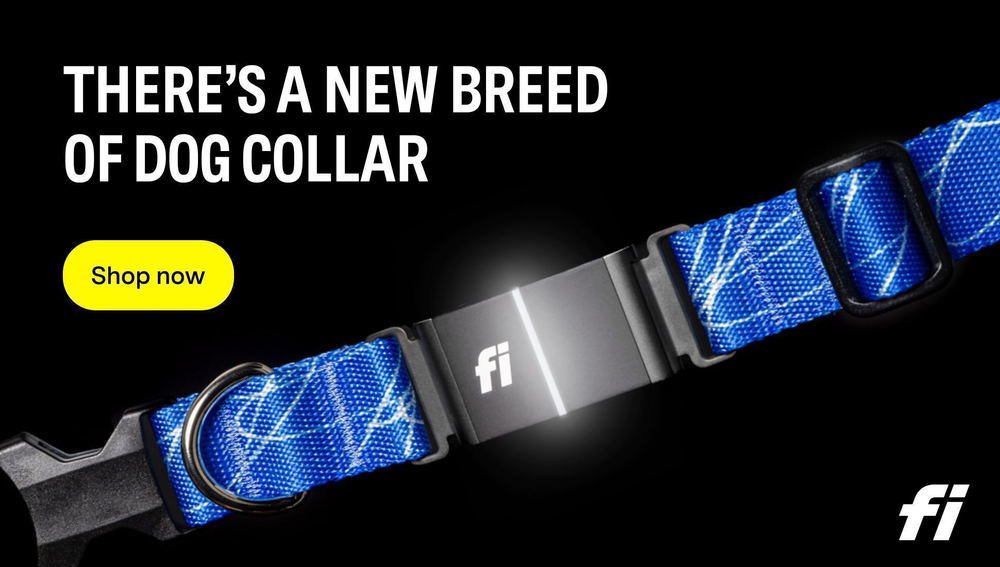Let's face it, the thought of losing your dog can be a truly terrifying ordeal. As pet owners, we form a bond with our pets that is incomparable. Therefore, when our furry friends get lost, it can feel like losing a part of ourselves. That's why today, we're diving into the essential guide to finding a lost dog with a microchip.
Understanding Dog Microchips
A dog microchip isn't like a GPS tracker. It doesn't give live tracking data about your pet's whereabouts. It's a tiny device, the size of a grain of rice, implanted under your dog's skin. It contains a unique identification number that can be read by a microchip scanner. In the case of your pet being found, a quick scan reveals the owner's details. This is why it's crucial to have your pet microchipped and keep your contact information up-to-date.
The Vital Role of Microchips in Finding Lost Pets
Here's where our story begins. Let's take Max, a golden retriever who has a knack for sniffing out squirrels and often ventures off in their pursuit. One day, Max's chasing instinct took the better of him, and he ended up lost.
Max had been microchipped as a pup. The microchip made all the difference. When a kind passerby found Max and took him to a nearby vet clinic, they scanned him for a microchip. Within minutes, they had Max's owner's details, and soon after, Max was on his way back home.
First Steps After Your Dog Is Lost
Discovering your dog is missing can be a heart-dropping moment. However, it's vital to stay calm and act swiftly.
- Start by searching your local area and frequently visited spots. Dogs are creatures of habit and often end up in familiar places.
- If your initial search proves unsuccessful, report your lost pet to your microchip company. They can flag your pet as missing, and some companies even offer services to send out alerts to local vets and shelters.
Utilizing Microchip Databases and Scanners
The true power of a microchip lies in the vast network of databases and scanners available.
Almost all veterinary clinics and animal shelters have microchip scanners. These places are usually the first stop for anyone who finds a lost dog.

Importance of Updated Information on Your Dog's Microchip
Imagine this. Someone finds your lost dog and takes it to a vet who scans the microchip. But the information on the chip is outdated. Your old phone number leads to a dead end. A heartbreaking situation, right?
This underlines the importance of keeping your pet's microchip information current.
Leveraging Online and Offline Communities
Beyond microchips and databases, a lost dog's best hope is often the community around them. Social media platforms, local online groups, and neighborhood apps can be highly effective tools in spreading the word about your missing dog.
Stories of Success: Microchip Miracles
Now let's return to Max's story, and another dog, Bella. Bella was a curious beagle who went missing. Her owners were devastated and searched everywhere with no luck. Then, almost three years later, Bella was found nearly 500 miles away! Thanks to her microchip, Bella was returned to her overjoyed family.
Stories like Bella's and Max's reaffirm the critical role microchips play in reuniting lost pets with their owners.
Microchipping: A Simple Yet Crucial Step
Let's move our focus to a preventative measure that plays an instrumental role in finding a lost dog: microchipping.
A simple, almost painless procedure that takes only a few seconds could mean the difference between endless days of worry and a quick, joyful reunion with your furry friend.
The procedure involves placing a tiny microchip under your dog's skin, typically between the shoulder blades. The microchip contains a unique identification number associated with your contact information in a secure database.
Microchipping is a one-time procedure, but remember, its effectiveness relies heavily on your part: keeping the contact information up-to-date.
Role of Veterinary Clinics and Shelters
In the quest to find a lost dog, local veterinary clinics and animal shelters play a significant role. They are often the first place people bring a lost pet.
These facilities have microchip scanners that can read your dog's unique ID number. They can then use this number to access your contact information and alert you that your pet has been found.
Again, having your most recent contact information associated with your dog's microchip ID is crucial for this process to work effectively.
Importance of Community Engagement
Let's go back to our friend, Max. When Max went missing, his owners not only notified the microchip company but also rallied their local community.
They posted about Max on social media, local community forums, and even physical bulletin boards around town. They engaged with their neighbors and local businesses, spreading the word about Max and asking for any possible sightings.
This community effort, coupled with the power of Max's microchip, ensured that when Max was found and his chip scanned, his family could be quickly notified and reunited with their beloved pet.

The Power of Persistence: Never Give Up
One of the most essential pieces of advice in the quest to find a lost dog with a microchip is to never give up.
Consider Bella's story once again. Bella was missing for nearly three years before she was found, but thanks to her microchip and the persistent hope of her owners, she was eventually reunited with her family.
The journey to find a lost dog can be emotional and exhausting, but remember, every day brings a new chance for your pet to be found and brought back home.
Fi: Revolutionizing Pet Safety with High-Tech Collars
In today's digital age, technology's impact extends even to the world of pets, enhancing their safety and our peace of mind. One such revolution is Fi, the smart dog collar.
Fi is an innovation in pet tracking that has transformed the way we monitor our furry friends' whereabouts. The advanced GPS tracker embedded in Fi's collar provides real-time location tracking, allowing owners to keep an eye on their dogs' movements.
What sets Fi apart from a standard microchip is its ability to actively track and notify pet owners. While a microchip is passive, waiting to be scanned, Fi is an active tracker. If your dog leaves a designated safe area, Fi can send an alert to your phone, enabling swift action.
More Than Just a Tracker: Activity Monitoring
Fi is not just about safety—it's also about ensuring your pet's health. The smart collar includes an activity tracker that monitors your dog's daily steps, providing insights into their activity levels and patterns.
This function can be a game-changer, especially for breeds with specific exercise needs or for monitoring an older or sedentary dog's activity levels.
Durable and Reliable: The Fi Collar
One of the great advantages of the Fi collar is its durability. It's designed to withstand all the rough and tumble a dog can throw at it, whether that's playing fetch in the park or splashing around in the sea.
The battery life of the Fi collar is another feature that owners appreciate. It can last up to three months on a single charge, ensuring that your pet is monitored continuously.

Part of the Community
Fi also taps into the community aspect. With its 'Lost Dog Mode', the Fi team sends alerts to all Fi users in your vicinity if your pet goes missing, creating a community of watchful eyes helping you track your lost companion.
Frequently Asked Questions about Fi
1. What is Fi?
Fi is a high-tech, smart dog collar that incorporates GPS tracking and activity monitoring. It allows pet owners to track their dog's location and monitor their physical activity levels in real time.
2. How does Fi work?
Fi uses GPS and LTE technology to track your pet's location. If your dog leaves a designated safe area, Fi will send an alert to your phone. It also monitors your dog's activity levels, providing daily insights into their exercise routines.
3. Is Fi waterproof and durable?
Yes, the Fi collar is designed to withstand all the adventures your dog can undertake. It's waterproof and built to handle all weather conditions, making it ideal for active dogs who love outdoor playtime.
4. How long does the Fi collar battery last?
The battery life of the Fi collar depends on the mode it's operating in. In the default mode, the battery can last up to three months on a single charge. However, if it's operating in Lost Dog Mode, where tracking is continuous, the battery life can last up to two days.
5. What is Fi's Lost Dog Mode?
When activated, Lost Dog Mode increases the frequency of location updates, providing real-time tracking of your lost dog. This mode also activates a red LED light on your dog's collar for increased visibility, and alerts are sent to all Fi users in your vicinity.
6. Can Fi replace a microchip?
No, Fi does not replace a microchip. A microchip provides a permanent method of identification that cannot be lost, altered, or removed, and is useful when your pet is found by someone and taken to a vet or shelter. Fi, on the other hand, provides real-time tracking and activity monitoring. They complement each other and provide comprehensive safety for your pet.
7. Does Fi require a subscription?
Yes, Fi requires a subscription to access LTE-M cellular GPS tracking, which enables you to track your dog anywhere in the U.S.
8. Does Fi provide health monitoring for my dog?
While Fi does track your dog's daily steps and provides insight into their activity levels, it does not monitor specific health parameters like heart rate, temperature, or sleeping patterns. For any health concerns, it's best to consult with a veterinarian.
Conclusion: The Future of Pet Safety is Here with Fi
In the world where technology and everyday life intertwine, the realm of pet safety and security isn't far behind. Fi represents a significant leap forward, merging advanced GPS tracking, activity monitoring, and community networking into one smart collar. This not only empowers pet owners with real-time information about their furry friends but also provides an added layer of safety.
Fi complements traditional pet security measures like microchipping and plays a pivotal role in proactive pet monitoring. From tracking your dog's location to keeping an eye on their activity levels, Fi serves as an all-in-one device designed with a pet's safety at heart.
Remember, the bond between humans and their pets is irreplaceable, and every step taken to secure your pet's safety, whether it's microchipping or using advanced tools like Fi, is an investment in their well-being and your peace of mind.
As we navigate through this technological age, innovations like Fi redefine pet safety, making it easier for us to take care of our furry companions. After all, they aren't just pets; they're family. Here's to a future where every walk is tracked, every run is monitored, and every lost pet finds their way back home.

